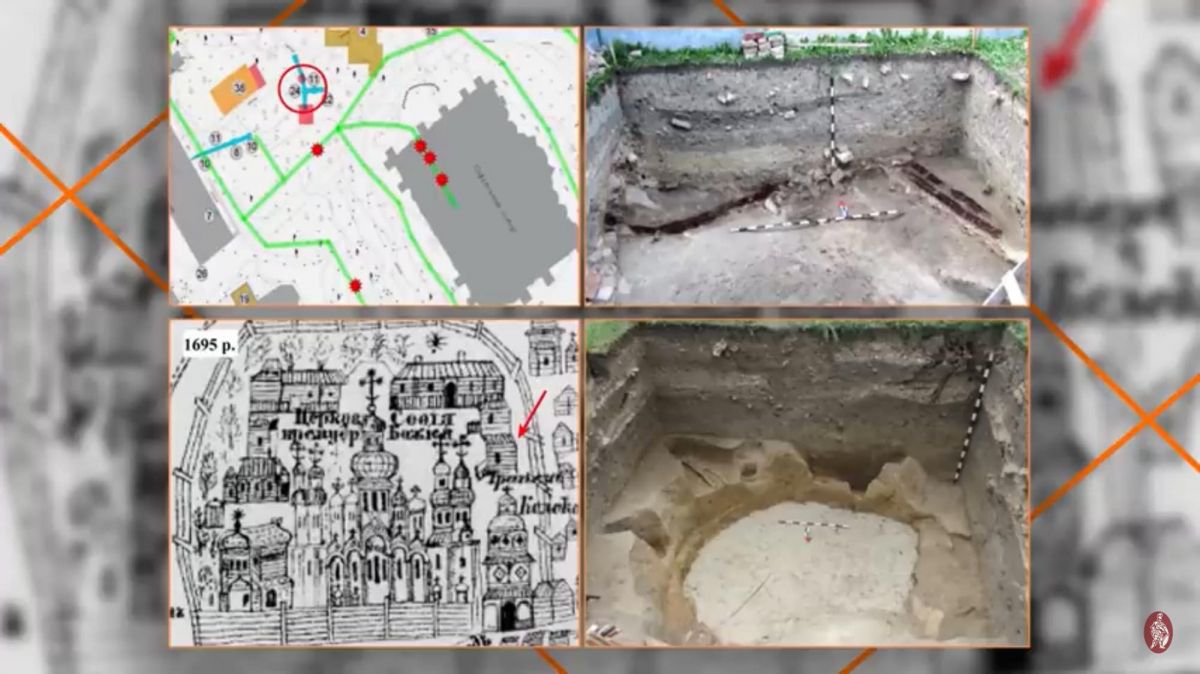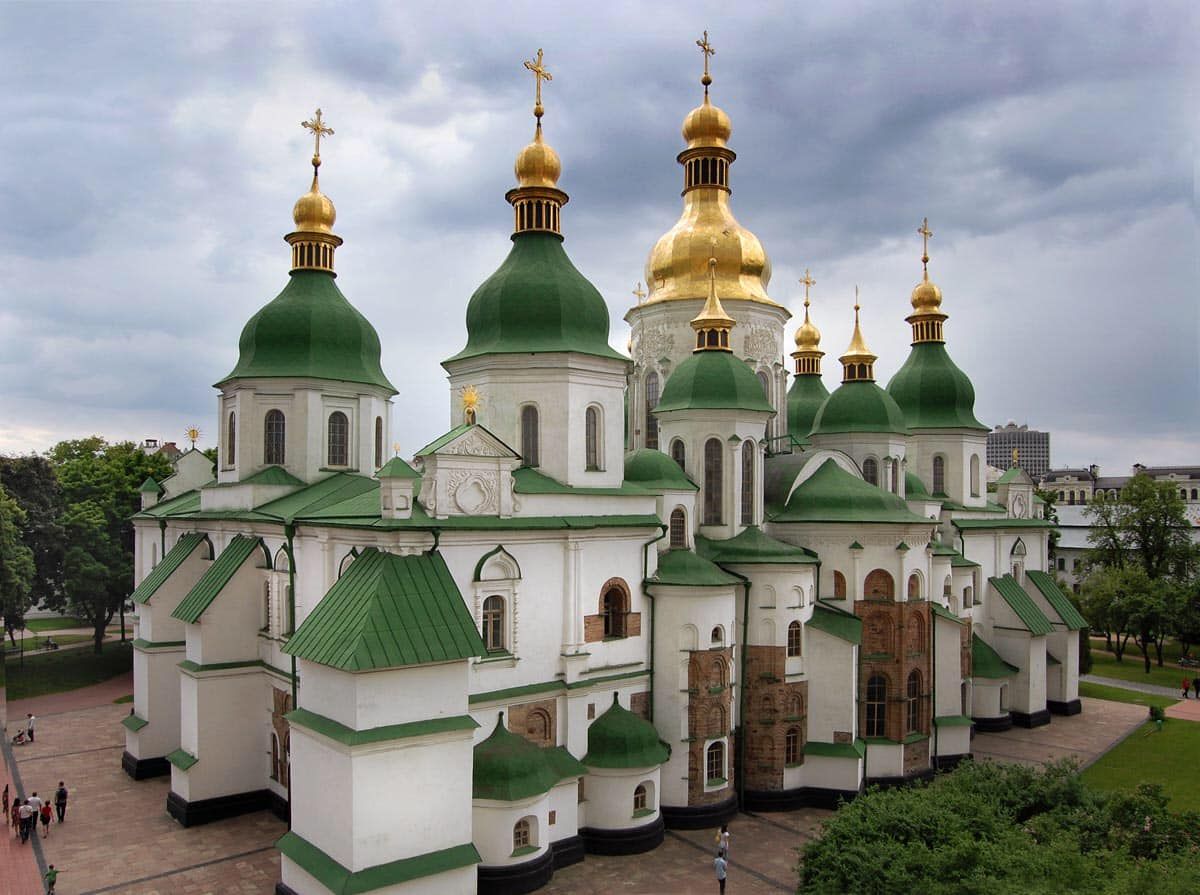Sensational find in St. Sophia of Kyiv shows that the cathedral was founded at least twice and at different times

At a depth of 2 m, we came across the remains of an inhumation female burial site. On the bones of the pelvis buried, near the right thigh, a bronze pin in the form of a shepherd's staff was preserved in situ.
This was announced on Facebook by archaeologist Igor Poluektov, according to Galinfo.
"For a long time, it was believed that St. Sofia was founded "on an empty place," "on the field outside the city" (Chronicle), that nothing seemed to exist here.
But the excavations under the direction of Candidate in Historical Science T. Bobrovsky, which have been conducted from 2018 to the present, revealed completely new information for us.
The reason for the research was the formation of a sinkhole over one of the sections of underground structures, 27 m from the north-western corner of St. Sophia Cathedral. The main task for the researchers was to open the destroyed section of the dungeon, examine and reinforce it. At the same time, archaeological studies of cultural layers around the sinkhole were carried out.

At a depth of 2 m, we came across the remains of an inhumation female burial site. Only the lower limbs remained of it - the upper part of the skeleton fell into the abyss and will probably be found later when choosing a sinkhole at a much lower depth (work continues).
On the bones of the pelvis buried, near the right thigh, a bronze pin in the form of a shepherd's staff was preserved in situ. Thanks to this discovery, as well as the totality of a number of other features, it was possible to attribute the burial site and connect it with the tribes of the Pidhirtsivska-Milogradska culture, the distribution area of which covered the upper Dnieper region, the northern part of Modern Ukraine up to the Stugna River and the Southern Buh. The heyday of this culture occurred in the first half of the VIII – beginning of the III centuries B.C. – a time when regular contacts of its community with representatives of Scythian culture were established and strengthened.
The pin found and, accordingly, the burial itself, date back by preliminary estimates to the V – IV centuries. B. C. E. To date, this is the oldest archaeological find on the territory of the estate of St. Sophia of Kyiv – the facilities earlier than the end of the X – beginning of the XI century have not yet been found, although there is information about the finds of some things of the Roman time and early Slavic period. As one can see from the sites of black diggers, things of the Roman era have recently been found in our country more and more, so here you can also hope for new discoveries.

In fact, in the very center of the upper city of Kyiv, we have a 2,500-year-old burial mound, on which the foundations of St Sofia were later laid. Interestingly, now archaeologists are ready to confirm that the foundation of the temple was laid at least twice, in different ways and at different times.
The attributed culture has its name from the first finds on the territory of the settlement near the village of Pidhirtsy, Obukhiv district, Kyiv region, made in 1950.
There are different opinions about the territory of its formation (science has yet to establish exact boundaries). The formation of monuments of the Pidhirtsivska-Milogradska culture took place on the basis of the Trzynets-Komarivska culture, and the descendants of the tribes of this culture were the population of the well-known Zarubynets culture. Most researchers tend to believe that the ethnic representatives of the tribes of the Pidhirtsivska-Milogradska culture were Proto-Slavs, the tribes of the Nevry mentioned by Herodotus.
Another interesting find, which was told by the head of the expedition, Candidate in Historical Science T. Bobrovsky, became a blank for printing, dated according to the cultural layer in which it is found - the second half of the XIV century. It's also interesting new knowledge that we didn't have.
It is obvious that this seal was associated with the Kyiv Metropolia at St. Sophia of Kyiv (Cathedral Metropolitan Church), where there was an archive where letters from all over the world flocked.
As you can see, it continued to exist in the post-Mongol period, letters were sent sealed.
Life was not interrupted, as some north-eastern historians were trying to convince us in the need to create a myth about the complete destruction of Kyiv during the invasion, mythical migrations and other fictions that were never confirmed by sources or archaeology, but were repeatedly refuted by real evidence.
One of them was this sensational find of an actual archaeological expedition, which continues its work, and therefore will be able to surprise us with new intriguing discoveries, the archaeologist wrote.









